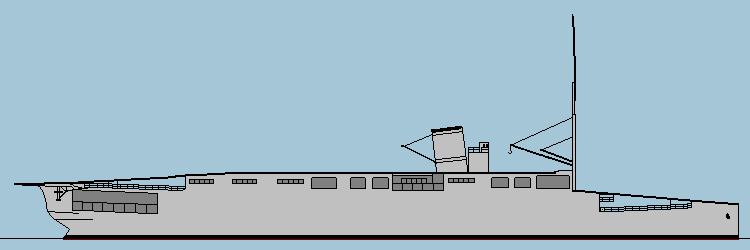During world War I, the German Navy made its first experiments with aircraft mother ships which were the first step into the design of a real aircraft carrier. Such ships were able to carry several float planes that were used for fleet reconnaisance. After the first successful prototype, the converted small cruiser Stuttgart
(3 Floatplanes), it was then pland to convert the older armored cruiser Roon
the same way (4 Floatplanes). This project was stopped in October 1918 for a more radical design.
It was then planed to convert the incomplete Italian passenger ship Ausonia
- under construction at the Blohm&Voss shipyard in Hamburg - into a Flugzeugdampfer, a design which was a mixture between a aircraft mother ship and an aircraft carrier. This ship was projected to carry up to 19 float planes and 10 land based aircraft. Like other contemporary carrier designs, it had two flight decks, one large landing deck at the stern and a shorter start deck at the bow, where the aircraft could start out of the hangar directly. In difference to the existing British carrier, the Ausonia
was planed to be a island-type superstructure on the flight deck, a feature that was later used on all aircraft carriers.
Altough the project was started in October 1918, it was never completed since the proect was stopped at the cease fire in 1918. The incomplete ship was scrapped on the shipyard in 1922.
|


